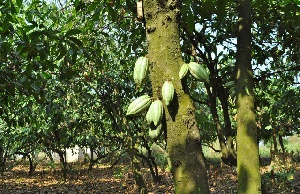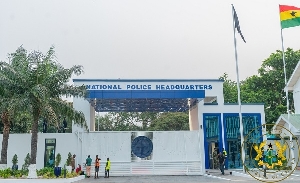Cocoa farmers have been given a boost after a petition to own non-cocoa trees planted on cocoa lands was approved by government.
The about 150 farmers located in communities in the Western Region, will now have ownership over those trees, thus checking illegal logging, deforestation and reduce the impact of climate change.
The successful petition was assisted by an international consortium consisting of the World Cocoa Foundation (WCF), Sustainable Food Lab, Agro Eco - Louis Bolk Institute, and Meridia.
Below is a press release
For the first time ever in Ghana, cocoa farmers have obtained official ownership of valuable non-cocoa trees on their farms.
Benefiting from this breakthrough are 150 farmers in Ghana’s Western Region who have successfully petitioned the Ghanaian government to register ownership of trees planted on their cocoa farms.
Leading the effort was an international consortium consisting of the World Cocoa Foundation (WCF), Sustainable Food Lab, Agro Eco - Louis Bolk Institute, and Meridia. It comes as the chocolate and cocoa sector works closely with the governments of Ghana and neighbouring Côte d’Ivoire to end deforestation and forest degradation in the cocoa supply chain.
Their work was funded by the United States Agency for International Development as part of Feed the Future, the U.S. government’s global hunger and food security initiative.
Unleashing the potential of tree ownership is an important milestone for efforts to conserve forests and support diversified sources of income for cocoa farmers.
According to WCF Environment Director Ethan Budiansky, the new developments in Ghana “allow cocoa farmers to include shade trees as part of their business plans. Growing cocoa alongside shade trees helps farmers confront the effects of climate change, and provides additional sources of income.”
Cocoa and chocolate companies working with farmers on climate adaptation and landscape level resilience have long called for farmers to be granted guaranteed ownership of timber trees.
In partnership with the Ghana Forestry Commission and Ministry of Lands and Natural Resources, the consortium successfully tested an affordable new tree registration system, using the latest technology to gather data on 150 farms and create registration forms.
Ghanaian government officials played a critical role in attributing registration numbers to the farmers’ trees.
Thomas Amoah, one of the participating cocoa farmers, said, “with registration of my trees, I protected my farm from illegal logging and chainsaw operators, and I hope we can finally make some money from our shade trees."
Rosemond Ofosu, another cocoa farmer near Asankrangwa echoed Amoah’s comments, saying, "I will now plant more trees on my farm because the loggers will not be allowed to destroy my farm."
Ensuring tree tenure for West African cocoa farmers is key to preserving the productivity of their farms. When growing timber trees on their land, farmers can earn money by thinning trees halfway through the 25 to 30-year cocoa life cycle. Even more income is possible at the end of this cycle, when heavy investments are needed to rehabilitate aged cocoa trees.
Tree tenure is also seen by experts as a way to fight the growing problem of illegal mining (galamsey). Agroforestry prompts farmers and their families to take a longer-term view of land management, thereby reducing the appeal of risky short-term gains offered through galamsey.
Cocoa, the main ingredient in chocolate, originates from the Amazon Basin rainforest, where for millennia it has grown under the forest canopy cover. But, in West Africa, where 70 percent of the world’s cocoa beans are produced, cocoa is often monocropped, with little to no shade. With climate change now threatening cocoa farms, forests and shade trees can positively affect local climatic conditions by promoting cooler temperatures, keeping moisture in the air and the soil, and helping maintain soil fertility.
In addition to providing shade, trees help improve biodiversity by creating a friendly environment for birds and cocoa-pollinating insects. Different tree species also serve as an obstacle for pests that often spread diseases between cocoa trees.
Business News of Wednesday, 21 March 2018
Source: www.ghanaweb.com

















